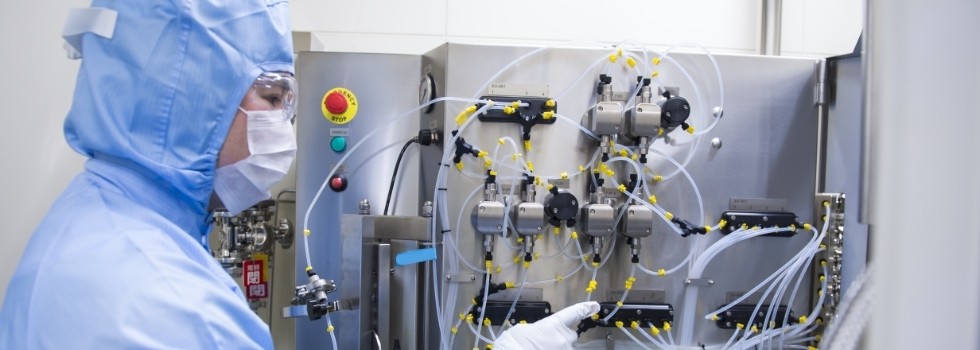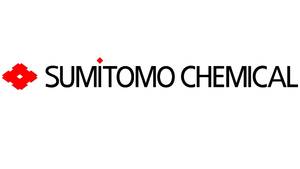Promotional Features
Investing in high-purity guide RNA to unlock the power of CRISPR therapies
The world urgently needs new manufacturing capabilities to realise the huge potential of genome editing therapy. Equipped with CRISPR-Cas9 technology, researchers have revealed opportunities to address major unmet medical needs through genome editing and to transform the lives of millions of patients. Yet, that promise will remain unfulfilled unless large quantities of high-purity raw materials are available. Recognising the need, Sumitomo Chemical is stepping up manufacturing.
Sumitomo’s effort to support the genome editing sector centres on guide RNA (gRNA), a nucleic acid that is essential to CRISPR-Cas9 technology. It is gRNA that guides the Cas9 nuclease, the genetic scissors, to the target gene to make the desired edit, making it critical to the success of in vivo and ex vivo CRISPR applications.
The nature of CRISPR-Cas9 genome editing puts specific requirements on gRNA. Firstly, gRNA needs to have a chain a few times longer than existing nucleic acid drug substances. Creating nucleic acids that contain around 100 nucleotides, as is required for gRNA, is a new challenge for manufacturers that are used to producing the biopolymers for use directly as drug substances. Manufacturers have only begun to master that challenge in recent years.
Secondly, gRNA must be produced at high purity. The US FDA considers “targeting elements” used in genome editing therapies to be “critical components” and requires developers to share details of their identity, purity and activity in the drug substance sections of their regulatory submissions.1 The focus on purity reflects the risk of off-target cuts to DNA and the resulting unintended effects.
Demand for the long, high-purity gRNA needed for genome editing therapies is growing rapidly. From the end of 2015 to the first half of 2021, the number of clinical trials of advanced therapies, an umbrella term that includes many CRISPR-Cas9 products, more than doubled, rising from 631 to 1,320.2,3 The explosive growth means demand for advanced therapy manufacturing capacity now far exceeds supply.4
The growth is forecast to continue, with the number of advanced therapies in development forecast to grow from 956 today to 3,100 by 2026. Demand for gRNA may increase even more than that jump in investigational products suggests, as more candidates will enter late-phase trials and win approval and therefore need to be made on a large scale. The situation is creating a pressing need for capacity. Sumitomo is investing to address the need.
Adding manufacturing capacity
Sumitomo began providing contract manufacturing services for nucleic acid drug substances in 2013, leveraging organic synthesis technology honed in the production of small molecule active ingredients and intermediates to support the emerging modality. More recently, Sumitomo began working on the large-scale production of the longer nucleic acid gRNA for use in genome editing therapies.
The first step of the strategy is already in place, with Sumitomo establishing the world’s first large-scale production technology for gRNA with a purity as high as approximately 90% for genome editing therapy. The purity level makes Sumitomo’s gRNA suitable for use in therapeutic applications of CRISPR-Cas9.
Having shown it can make highly pure gRNA, Sumitomo is now investing to increase its production capacity. Work has begun on a nucleic acid drug substance production facility in Oita City, Japan that will increase Sumitomo’s manufacturing capacity by around six times when it comes online in the middle of 2023. The leap in manufacturing capacity reflects pent-up demand for high-purity gRNA and forecasts that the genome editing field will continue to grow quickly in the years to come.
The availability of high-purity gRNA could have profound effects on human health, with the cost, speed and efficiency of CRISPR-Cas9 making the Nobel Prize-winning technology a key tool in the rise of genetic medicine. By accessing gRNA from Sumitomo, developers of genome editing therapies will clear a barrier to the production and scale up of their candidates and position themselves to address major unmet medical needs.
References
1. Schultz, K. Regulatory Considerations for CAR T Cell Development.
2. Alliance for regenerative medicine releases 2015 annual data report, highlighting sector trends and metrics - alliance for regenerative medicine. https://alliancerm.org/press-release/alliance-for-regenerative-medicine-releases-2015-annual-data-report-highlighting-sector-trends-and-metrics/ (2016).
3. Regenerative medicine in 2021: A year of firsts & records. https://alliancerm.org/sector-report/h1-2021-report (2021).
4. Rader, R. A. Cellular and gene therapies face a manufacturing capacity crunch. BioPharm International https://www.biopharminternational.com/view/cellular-and-gene-therapies-face-a-manufacturing-capacity-crunch (2020).

